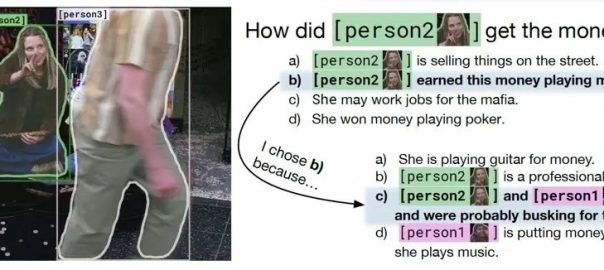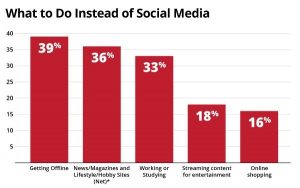To do so, they use various AI-based technologies and strategies.
AI Tech
Machine Learning
Machine Learning (ML) is are systems that learn from data, identify patterns, and make decisions with minimal human intervention.
In traditional computer programming and traditional computational computer models, the logic and the “rules” are decided up front by humans and then “hard coded” into the model, which then uses those rules to calculate the results.
In machine learning, the machine learning algorithms itself enable computers to “learn” from “experience”, or from exposure to data, and to make changes and “conclusions” based on it.
This capability to improve automatically through learning makes ML so integral to AI.
How ML Works
Machine learning has just 3 base components:
-
The Model is a specific representation of a problem. It can consist of a set of equations, a decision tree, or a complex neural network, depending on the complexity of the problem..
-
The Parameters are the factors that the model uses to come to its “conclusions”, its findings. In the context of a neural network, for example, parameters would include the weights and biases of the network.
-
The Learning Algorithm adjusts the parameters based on the data. The goal is to minimize the difference between the model’s predictions and the actual outcomes. This process is known as training the model.
Machine learning models are broadly categorized into three types, based on the nature of the learning signal or feedback available to the system:
-
Supervised Learning: The model learns from a labeled dataset, meaning each example in the training dataset is paired with the correct output. The model makes predictions or decisions based on input data and is corrected when its predictions are wrong.
-
Unsupervised Learning: The model learns from an unlabeled dataset, trying to identify underlying patterns or structures in the data. Common applications include clustering and dimensionality reduction.
-
Reinforcement Learning: The model learns to make decisions by taking actions in an environment to achieve a goal. It learns from trial and error, receiving rewards or penalties for the actions it takes.
What Machine Learning Can Do
Machine Learning algorithms are designed to analyze data, learn from it, and then apply what they’ve learned. Here are some things it can do or be used for.
-
Predictive Analytics: ML can predict future events by analyzing patterns from past data. This can be useful for things like the stock market or to prediction product demand at different times.
-
Image Recognition and Processing: ML algorithms can identify objects, faces, and scenes in images. Whenever your photo application tells your aunt is in the photo, or you can search for all photos that contain a cat, that’s ML at work.
-
Recommender Systems: Whenever you get recommendations in an app or via a service, those recommendations come from machine learning. The songs Spotify suggests, the shows Netflix thinks you’re interested in, etc. – all ML.
-
Anomaly Detection: ML algorithms can detect unusual patterns in data. This can be useful in fraud detection, network security, monitoring industrial machinery, etc.
-
Natural Language Processing (NLP): Used to process and “understand” human language. Can be used for translation, sentiment analysis, chatbots …. And search.
Natural Language Processing
The goal of NLP is to give computers a way to understand, interpret, and generate human language in a way that is both meaningful and useful. While the machines don’t really understand the way you and I do, the mathematical way of parsing language makes it possible to at least give the impression or the feeling that the models “know” what we’re talking about.
How NLP Works
NLP combines computational linguistics (translation: rule-based modeling of human language) with statistical machine learning. It generally involves:
-
Tokenization: Segment the text into sentences, words, or phrases to analyze those parts.
-
Part-of-Speech Tagging: label each grammatical element (like noun, verb, adjective etc) to understand grammatical structure.
-
Parse: Analyze that grammatical structure of a sentence to understand the relationship between those elements.
-
Semantic Analysis: Try to “understand” the meaning of the text, including the identification of entities, concepts, and the relationships between them.
-
Pragmatic Analysis: Try to “interpret”, to “understand”, the intended effect of the text on the reader or listener, taking into accounts things like context and social nuances.
This whole process relies on complex mathematical algorithms and models, including decision trees, support vector machines, and neural networks, especially recurrent neural networks (RNNs) and transformers. Those things, those models, are trained on large datasets of text, learning to find and recognize patterns, structures, and nuances of language.
AI Applications in Search
Semantic Search
Built on NLP and ML, semantic search tries to understand the meaning and context of your searches. By looking at the relationships between words and concepts, semantic search goes from simple keyword matching to considering the context of a query. This can give search results that are more accurate to a searcher’s intentions.
Predictive Search
That thing where a search engine tries to guess your query and offers suggestions even before you finish typing.
Analyzes historical data, current trends, and user-specific behavior.
Voice Search and Recognition
AI voice recognition converts spoken language into text. NLP and ML then work together to interpret the queries and return spoken results.
AI in Search
“Generative Summaries for Search Results” (Google)
Use a large language model (LLM) to generate a natural language-based summary in response to a query.Besides using the content of the query itself, additional content can be processed by the LLM. Processing additional content can help mitigate inaccuracies or the problem of summaries being too broad or narrow.
These summaries are meant to give a good initial understanding of a topic, with options for conversational follow-up queries.
The patent outlines a process which involves receiving a query, selecting relevant search result documents (SRDs) based on the query and related or recent queries, and then processing these content of those documents using an LLM to generate a natural language summary.
ERNIE-ViL (Baidu)
Learns joint representations of vision and language. It uses structured knowledge from scene graphs, which helps in understanding the detailed semantic connections between objects, their attributes, and relationships within images and their corresponding descriptions in language.
By constructing Scene Graph Prediction tasks, such as Object Prediction, Attribute Prediction, and Relationship Prediction, during its pre-training phase, ERNIE-ViL can effectively predict different types of nodes within a scene graph that has been parsed from sentences.
After being pre-trained on large image-text aligned datasets, ERNIE-ViL has shown significant effectiveness across a variety of vision-language tasks.

This technology opens up new possibilities like image description, visual question answering, and more by understanding and generating descriptions of visual content in a way that closely mirrors human perception and exprssion.
“Method and system for ranking a web resource” (Yandex)
Improves how websites are ranked in search results. It does this by creating a score for a website based on its features and how much traffic it gets, and then comparing this score to a reference score of a site or page that gets a similar number of traffic. This adjusted score helps to place the website at a suitable spot on search results pages, making sure future quality scores are more closely in line with with user traffic levels (popularity) and relevance.
“Awareness Engine” (Microsoft/Bing)
Analyzes social media posts within a specific timeframe to identify high-quality content. It uses various signals to calculate a “virality” score, and it makes a “social signature” for each piece of content.
The post AI In Search: What It Is & What It Does appeared first on Search Engine People Blog.
About the Author: Ruud Hein
(8)








